My wife’s family came to visit us for the 4th of July. After they arrived and got settled in, we began to think about what we had been up to. My father in law mentioned that he and his son (with his church youth group) had spent the previous evening building rockets out of soda bottles.
“Rockets?” said I.
“Rockets” said he.
Assuming he was not all that serious, I further queried: “How high do they fly?”.
“Couple hundred feet” was his reply.
With a slightly maniacal grin on our faces, off to the garage we ran to see which bits I already had and what else we would need to buy. Shopping list in hand, off to the local hardware store we ran to obtain the necessary bits of PVC to build our own bit of 2 liter rocket power. Luckily we already had a garage full of 2 Liter bottles we’d been collecting to store water (note: Don’t do this. There are better ways to store water) that could be sacrificed to the cause, so we didn’t have to guzzle anything. After a lengthy (30 seconds) planning session we started to build.
The basic concept for how these rockets work is very simple. In short, you add some water to the bottle, shove it onto your launch platform, and then use the launch platform to add pressure in the form of air into the bottle. Eventually, the pressure will overcome the seal on the neck of the bottle, and the bottle will pop off, allowing the water to shoot out due to the air pressure. This propels the bottle anywhere from just a few to several hundred feet in the air.
To build ours, I used 1/2″ PVC pipe, a few 90˚ elbows, a 45˚ elbow, and some end caps. We also happened to have an air valve from an old bicycle tire innertube that I shoved through a hole I drilled in one of the pvc end caps. This became our pressure filler. Here is a shot of the assembled launch platform laying on its side:
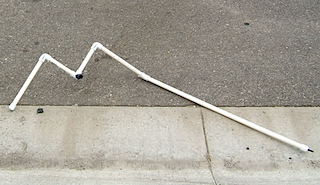
It’s a bit hard to tell from this picture, but the overall design is a W shape with a typical sprinkler riser at the middle of the W, and a longer pipe coming off one end of the W at a 45˚ angle so you could stand and fill it with air. The longer pipe also allows you to get a little less wet when launching.
The trickiest part of this whole thing is getting the bottle to have the right fit over the sprinkler riser. A tighter fit will shoot the bottle higher (as more pressure can build), but too tight will blow your launch platform apart. We found that wrapping the threads of the sprinkler riser with teflon tape until it was snug, and then cutting a balloon in half and covering the teflon tape provided just about the right fit. You’ll have to experiment with yours to get a consistently tight fit.
Our initial launches with just a plain old 2 liter bottle were going up about 100-150 feet. We figured that if we applied some aerodynamics to the rocket design, we could get it to go higher. So, we fitted some fins and a nose cone to a few bottles, and experimented with different nose cone payload weights. The rocket that went the highest was dubbed “The Price Of Gas” (named by it’s designer, Ray Johnson, my brother in law) – it had about an 8 second flight. That means about 4 seconds of free-fall. My father in law assured me that something called “math” can tell us that this means it got to a height of around 100 meters, or somewhere between 320 and 330 feet. That’s pretty high. This also means that it was traveling close to 90 miles an hour when it hit the ground.
No wonder we kept breaking nose cones.
We tried a few different designs with a parachute – some were even successful launches that deployed the chute and floated (somewhat) gently back to earth. None managed to fly as high as The Price of Gas, though. It was the clear champ.
Here’s a few pictures of some launches:
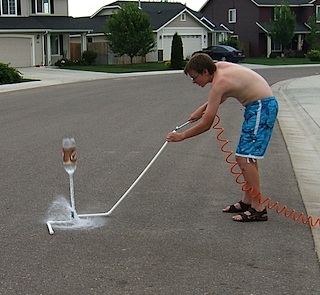
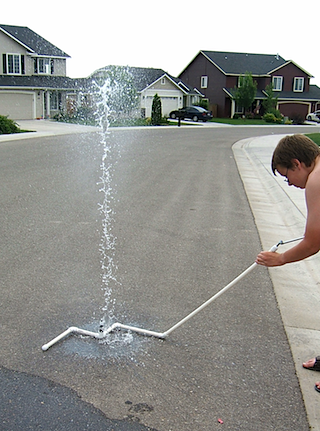
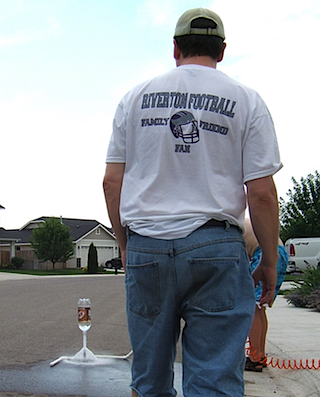
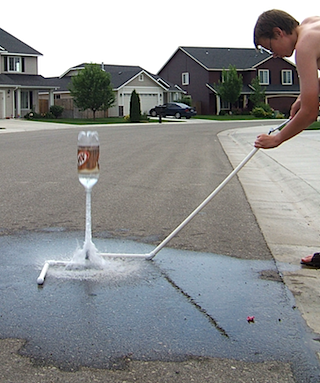
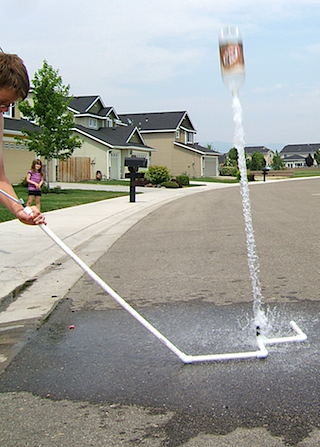
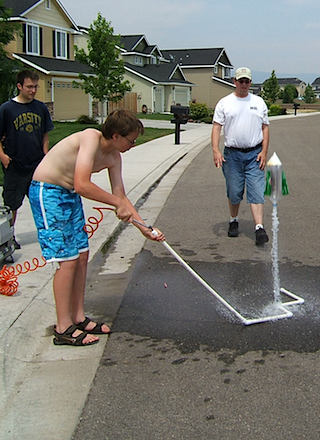
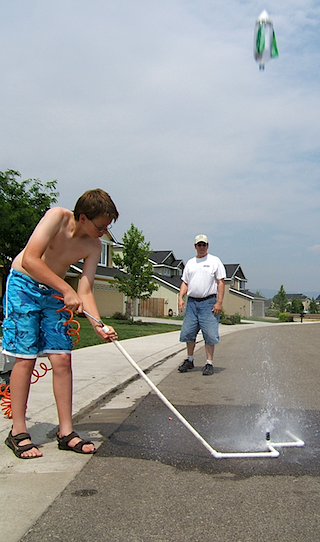
Leave a Reply